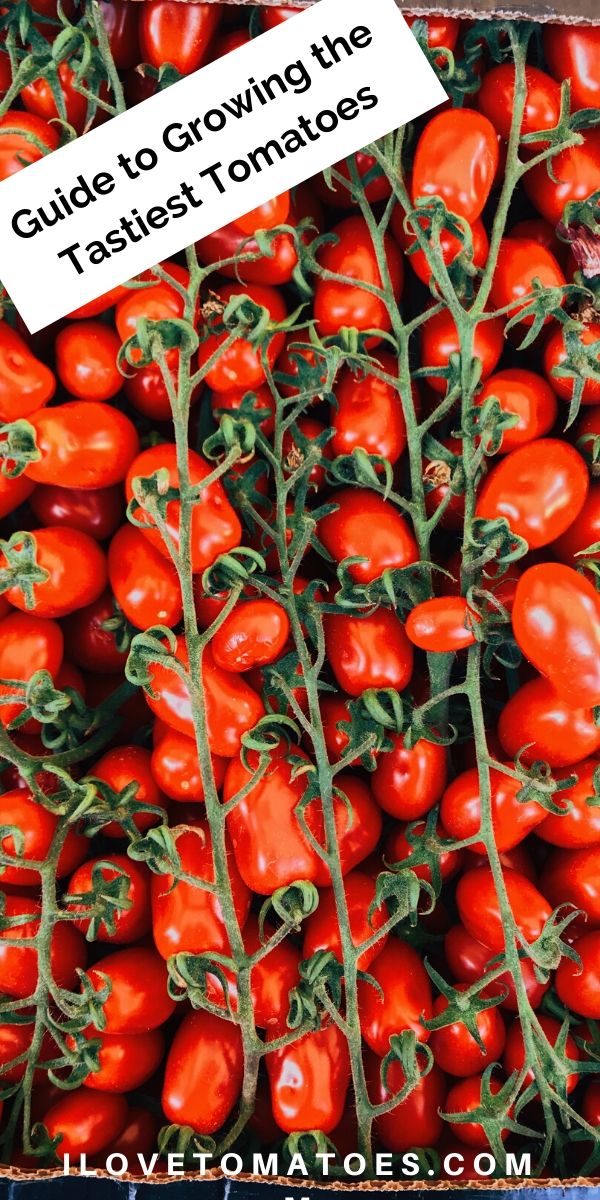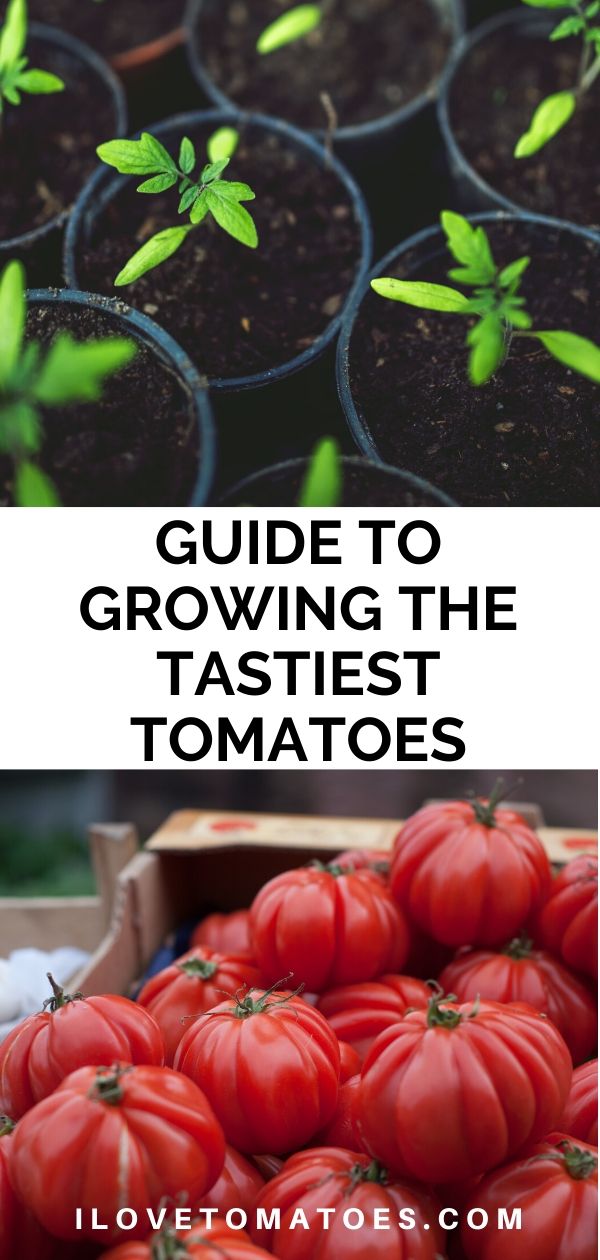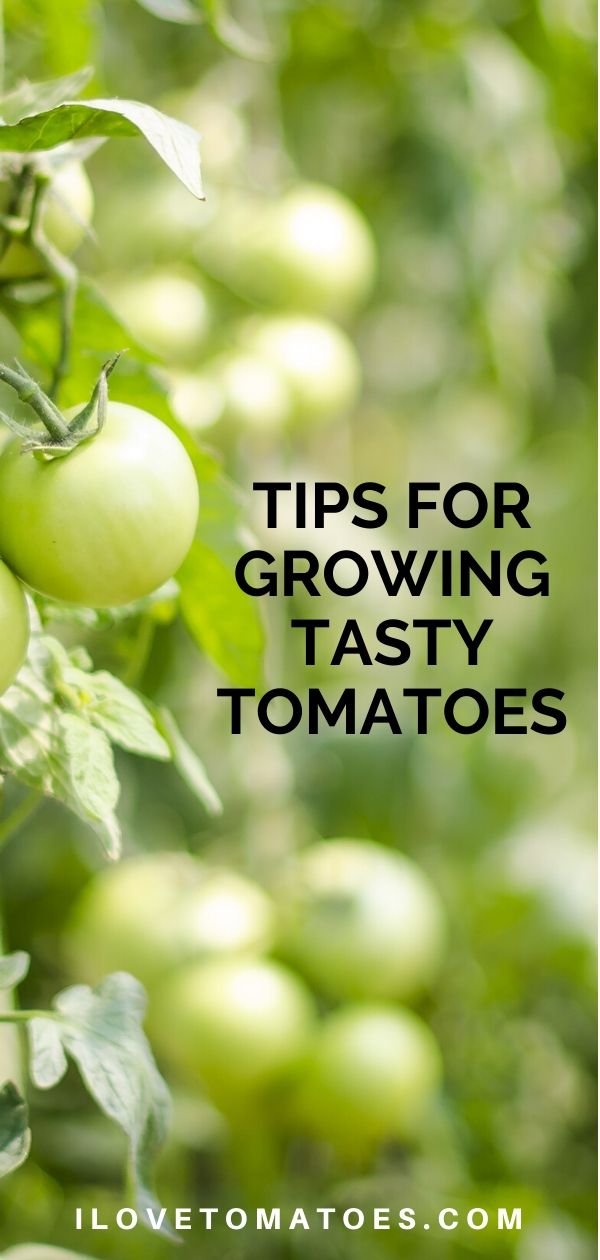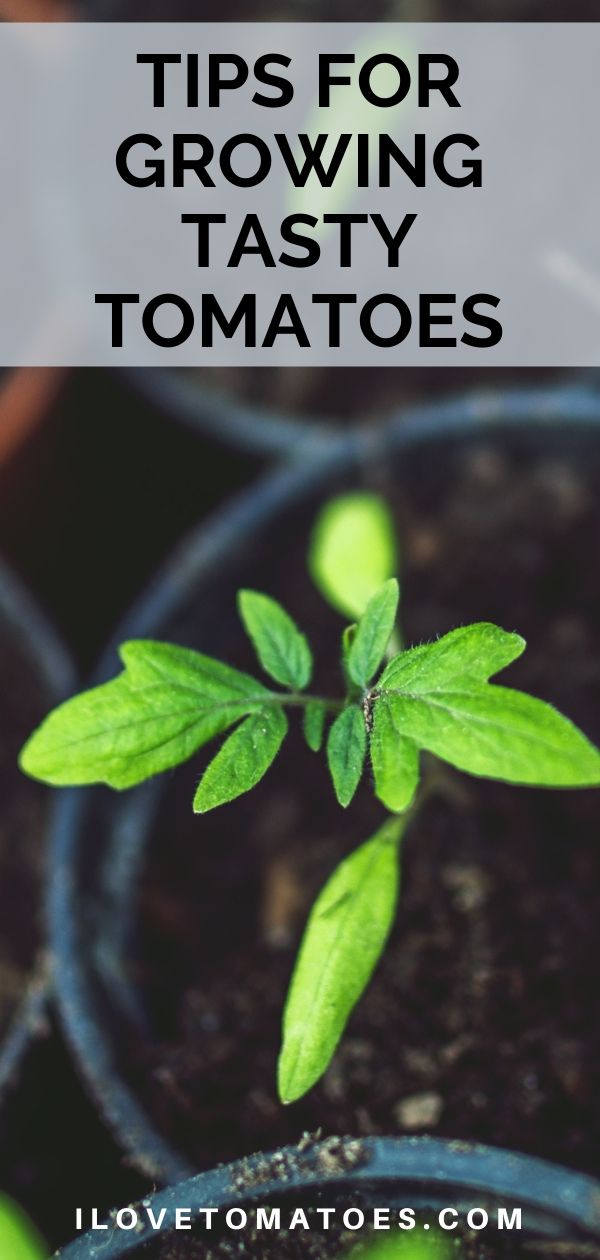Tips for Growing Tomatoes
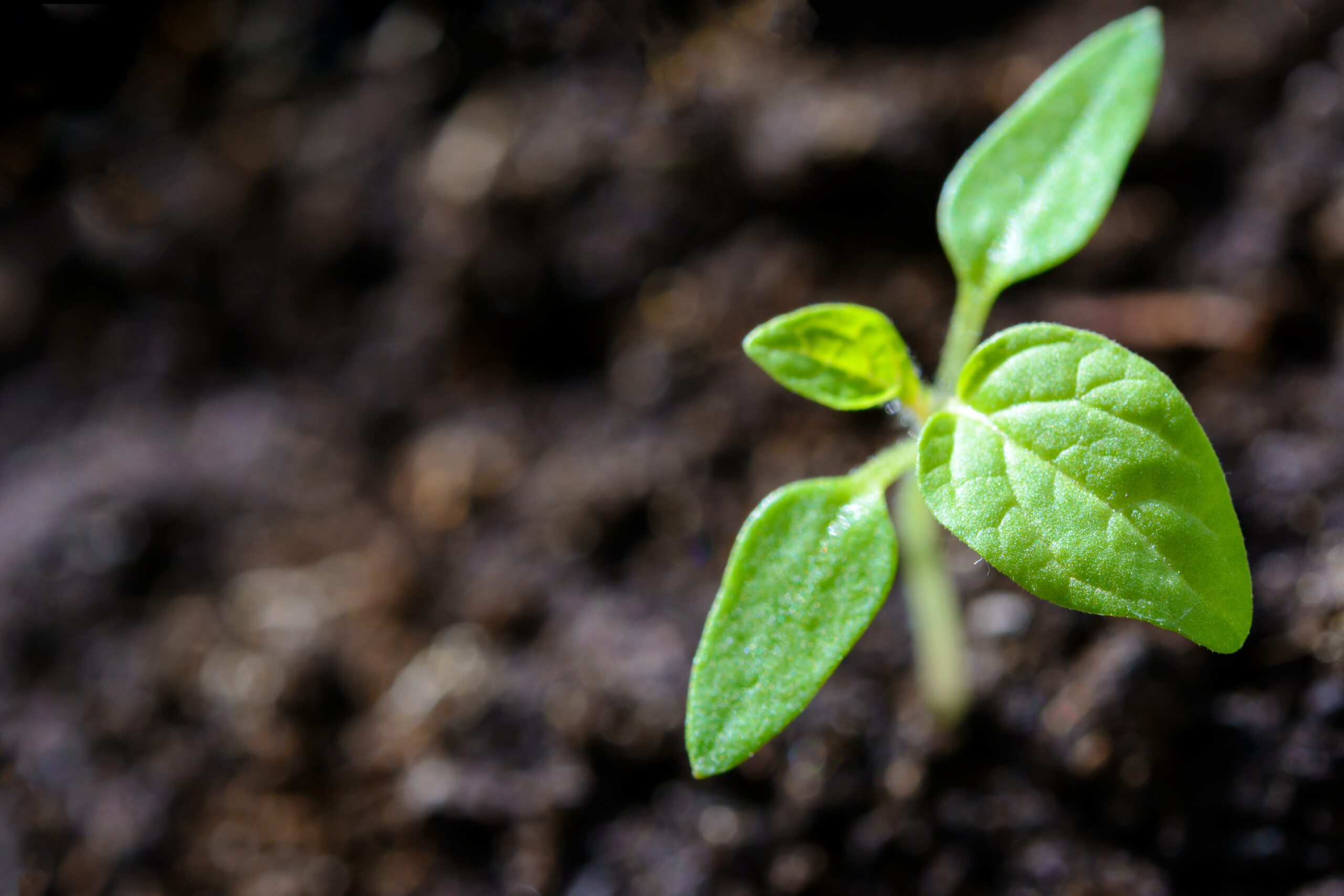
The tastiest tomatoes of all aren’t found in the grocery store. The Brandywine and the Cherokee Purple, the Mortgage Lifter and the Ananas Noir, the Principe Borghese and the Tiffen Mennonite, all the wonderful heirloom varieties and the new hybrids are only found in a few specialty markets and thousands of backyard gardens.
Make your summer complete by growing tomato vines loaded with tasty, juicy tomatoes.
Whether you want them for fresh eating or grilling, sauces, canning, drying or freezing, there is a variety – or two or three or ten – just right for you.
Raising tomatoes isn’t difficult, but there are some tricks to getting big, healthy, disease-free vines.
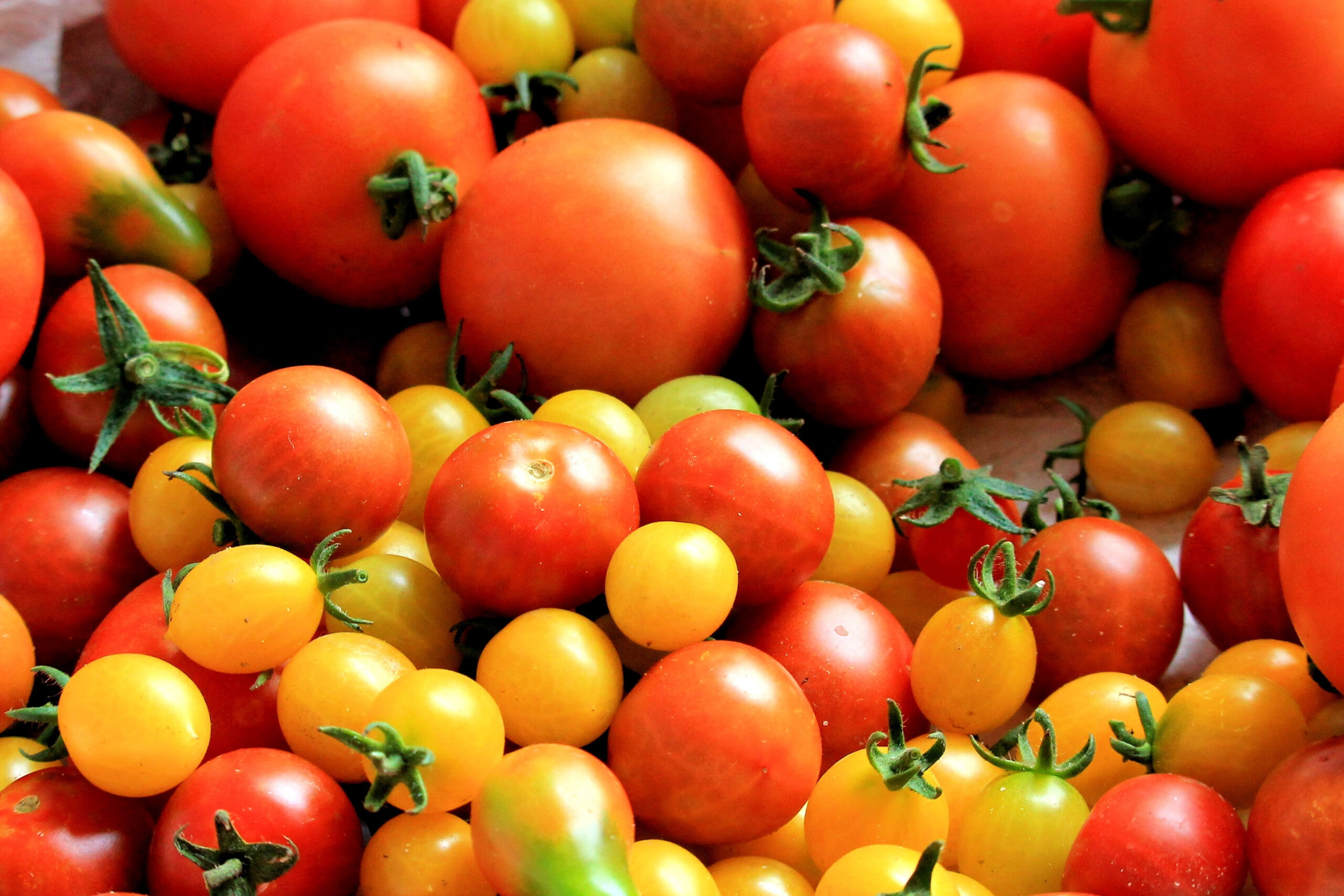
Choose The Tomato Varieties
What tomato varieties should you choose? There are hundreds of varieties available, and the choices can be dazzling. You can usually limit your choices quickly if you think about what you want the tomatoes for.
Sauces?
You’ll want firm-fleshed plum tomatoes, also called sauce or Roma tomatoes, such as Principe Borghese.
Competing with your neighbors for the first ripe tomatoes on the block?
You’ll want to investigate ultra-early varieties such as the old-fashioned Stupice or the newer Beaverlodge.
Biggest tomato at the State Fair?
Try the hybrid Big Beef or the heirloom Old German.
Tiny tomatoes for salads?
Try the classic cherry tomatoes, or newer grape and currant tomatoes.
Or check out the heirloom variety, Yellow Pear, which bears pear-shaped yellow fruits no more than 1 1/2 inches long.
Slicing or grilling?
Most mid-season or heirlooms will fill the bill.
Also, note whether the variety is determinate or indeterminate.
Determinate plants are bushy and suitable for containers and small gardens. Indeterminate plants grow tall and vine-like. They will need strong support and ample room.
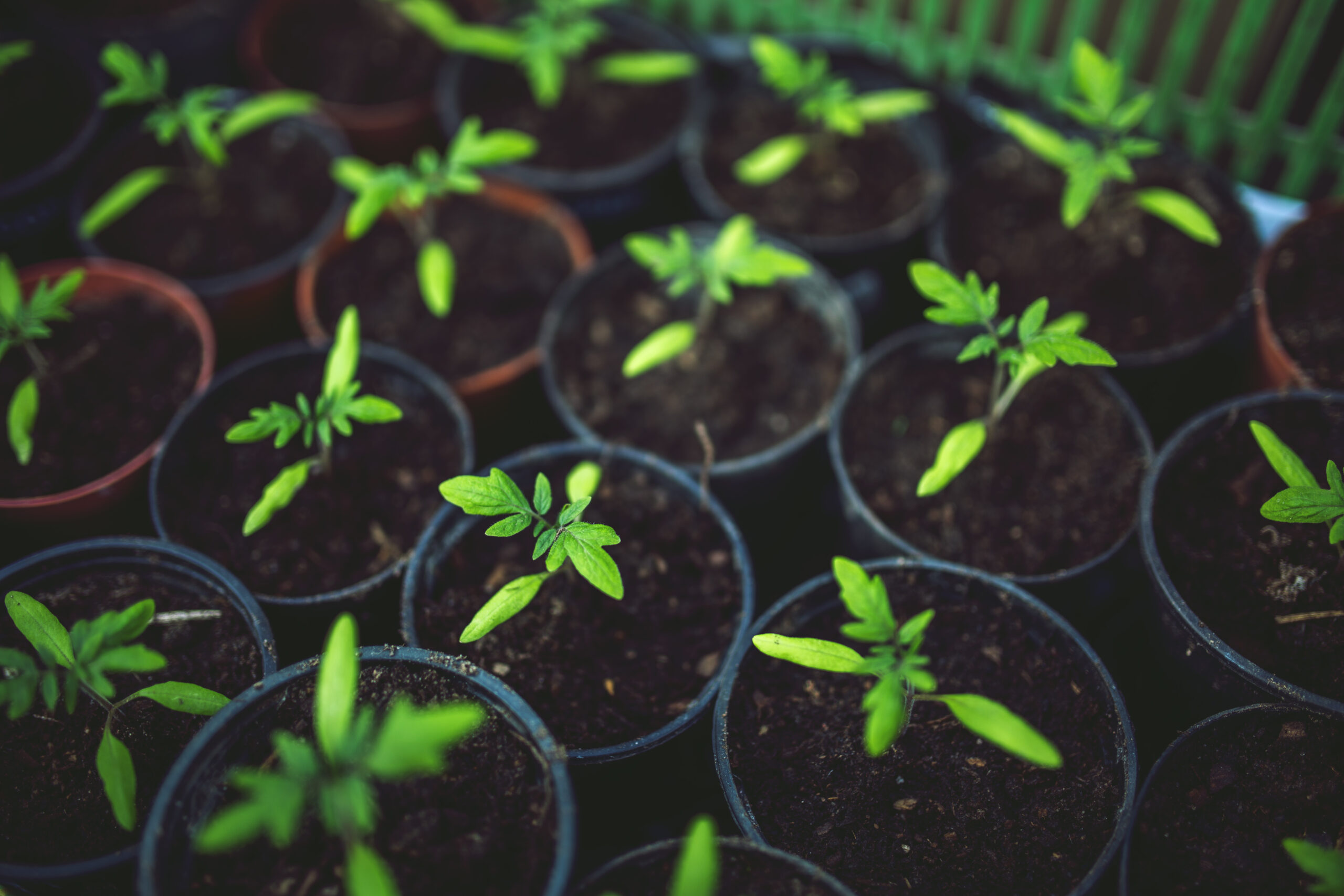
Start Your Tomatoes Indoors
Some specialty nurseries will grow heirloom variety tomato plants, but more often than not, you’ll have to grow your own if you want special varieties.
Sow the seeds in sterile seed starting mix in three or four-inch pots. A light sprinkling of cinnamon on the surface of the soil will help prevent damping-off disease.
Put the pots in a warm place until the seed germinates, then put under strong grow-lights. If possible, keep the plants on the cool side, between 60 and 70 degrees Fahrenheit. This helps prevent them from becoming leggy.
The time-honored method of growing seedlings in tin cans in a sunny windowsill doesn’t always yield satisfactory seedlings because even in a south-facing window, the plants may not get enough light.
Hang an inexpensive fluorescent fixture a few inches above the seedlings and they should do much better.
Prepare the Soil for the Tomatoes
While you wait for your tomato seedlings to grow, prepare the garden soil where you intend to plant them. Tomatoes are heavy feeders, and require some calcium in the soil to prevent blossom end rot.
Dig a good organic fertilizer, such as fish meal, into the soil along with a handful of bone meal for each plant.
Spread an inch or so of finished compost on top to slowly feed the soil and to establish a population of healthy soil microbes.
Let the soil mellow for a week before planting.
Growing Tomato Seedlings
The seedlings must be hardened off before planting. A week before you intend to plant them, move the seedlings outdoors in a sheltered, shady spot for a few hours. Let them stay out a little longer the next day. Slowly move them into the full sun as well.
This process thickens the cell walls and encourages the plant to produce pigments that protect its cells from sunburn.
Tomatoes should be planted after the last average frost date has passed. The seedlings themselves should have several pairs of true leaves and should be tall and healthy.
In the garden, they should be planted 20 to 30 inches apart.
To encourage good root production, strip several of the lower leaves off. Remove the plant from its pot and bury it nearly up to the first of the remaining leaves.

New roots will sprout from the stem where the leaves were removed, which will anchor the plant and help it draw in plenty of nutrients.
Water in the seedling after planting. To protect the young plants from cutworms, cut a strip of cardboard about 6 or 8 inches long and two inches wide. Curl it into a circle and push it down into the soil around the base of the plant.
Sprinkle ashes or diatomaceous earth on and around the young tomato plant to discourage insect pests from nibbling on it while it is still getting established.
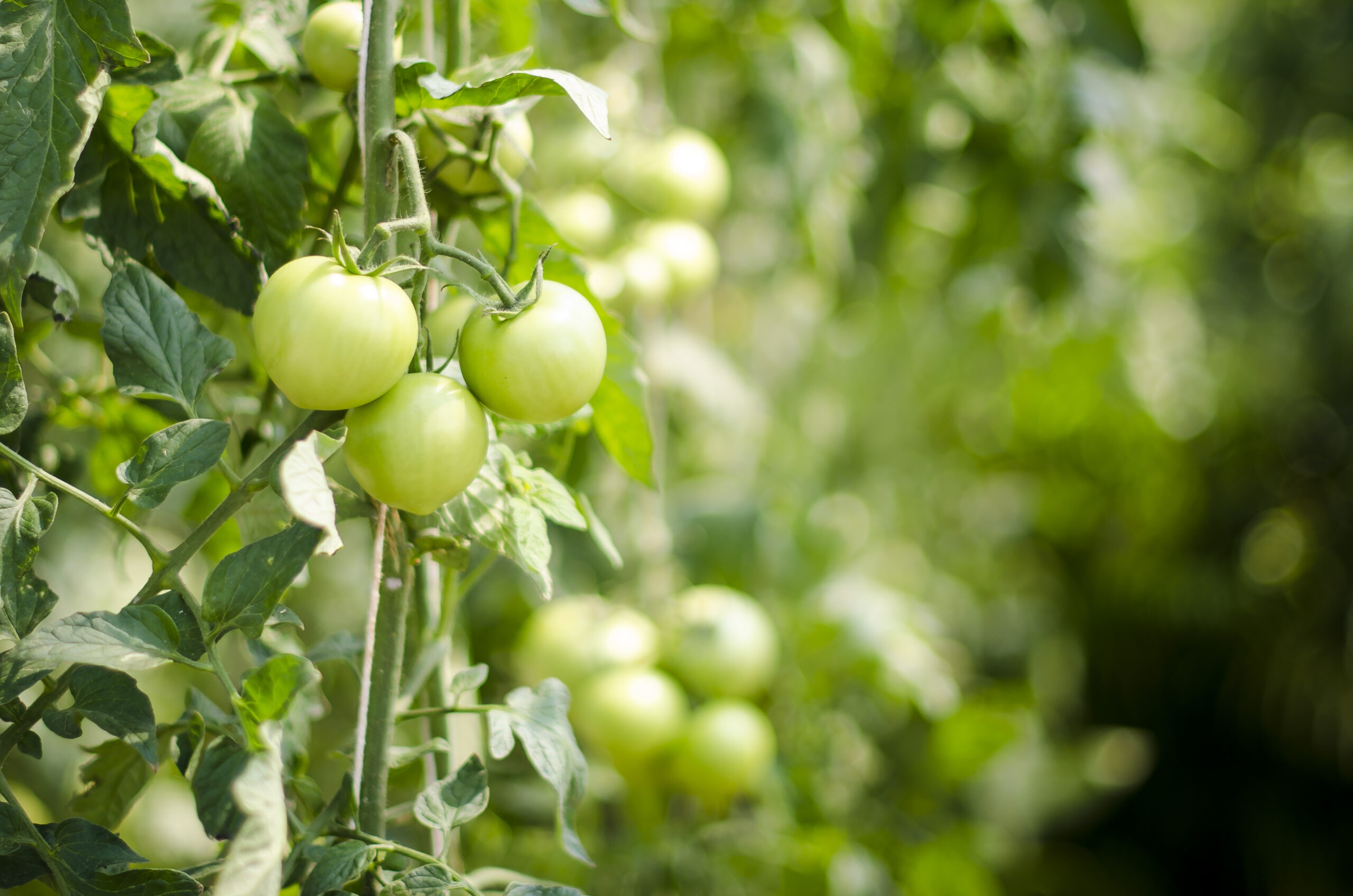
Weather Protection for Tomatoes
If the weather is unpredictable in your area, it would be wise to give your young plants some protection.
Try the Wall-o-Water, which is a cone-shaped plastic device with tubes that the gardener fills with water. The Wall-o-Water goes over the tomato plant to shield it from wind and sun and to regulate the temperature around it.
The water absorbs the sun’s heat during the day and radiates it at night. If a freeze hits, the water will release a small amount of heat as it freezes, and will still regulate the temperature around the plant.
An inexpensive version can be fabricated from empty one-liter soda bottles and some duct tape. Arrange empty bottles in a solid ring around the young plant, and duct-tape them together. Fill the bottles nearly full and cap them.
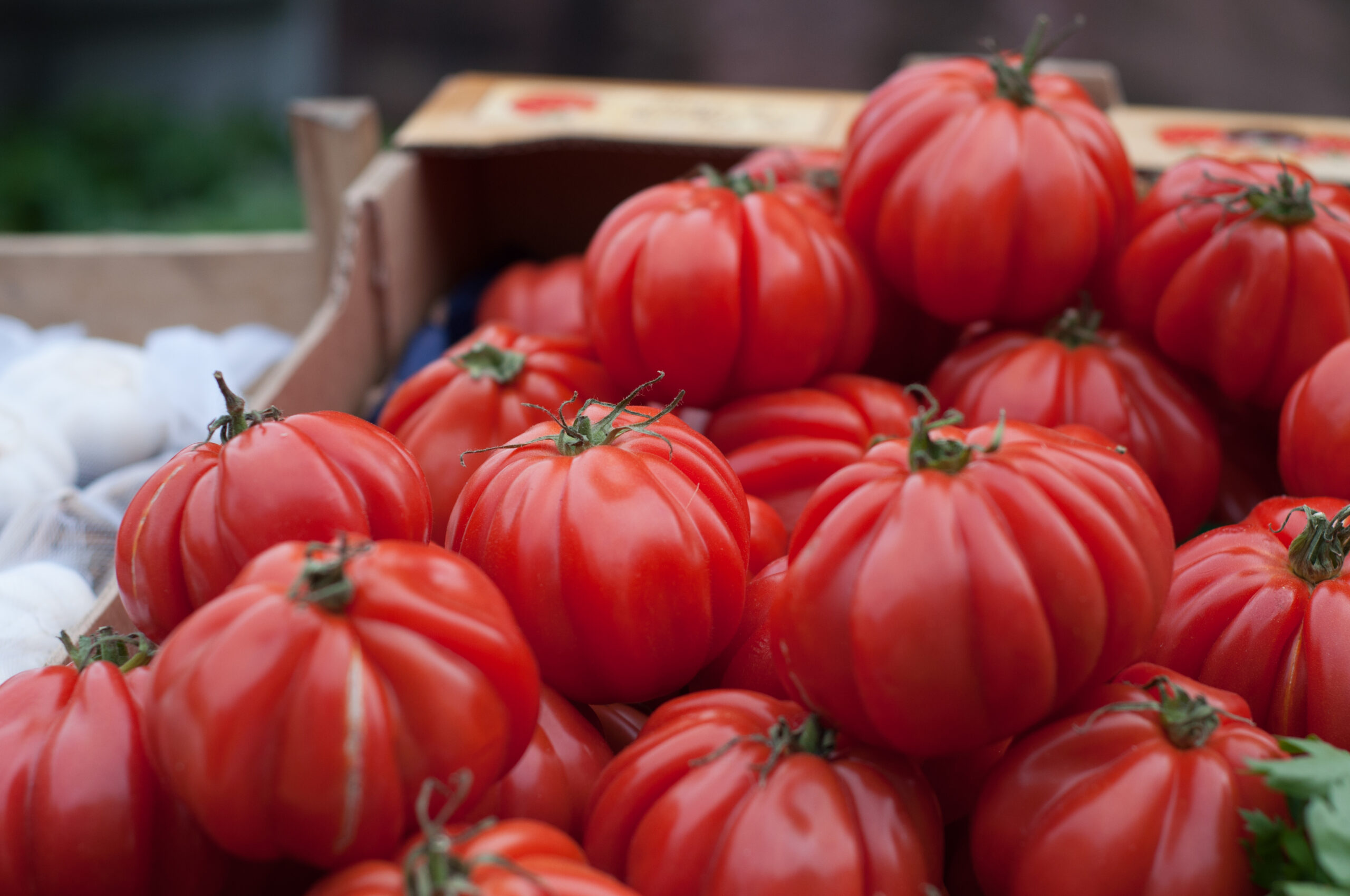
Preventing Tomato Insects and Diseases
Young plants are particularly vulnerable to attacks from tomato pests, insects and diseases.
Check the plants daily and pick off any flea beetles or caterpillars that you see.
Insecticidal soaps containing pyrethrin are useful for infestations.
The best control for diseases is planting disease-resistant varieties. Once the tomato plants are well-established and putting on new growth, a gentle spray with the hose once or twice a week on sunny mornings will help wash off pests and spores of diseases.
Do encourage beneficial insects to visit your garden.
Plant some annual flowers around your tomatoes to attract pollinators and feed other helpful insects. Marigolds, zinnias, and cosmos are all good companions.
Basil is also a good companion to tomato plants, as both seem to grow better when planted near one another.
Besides, you’ll probably want some basil to season your tomato sauces.
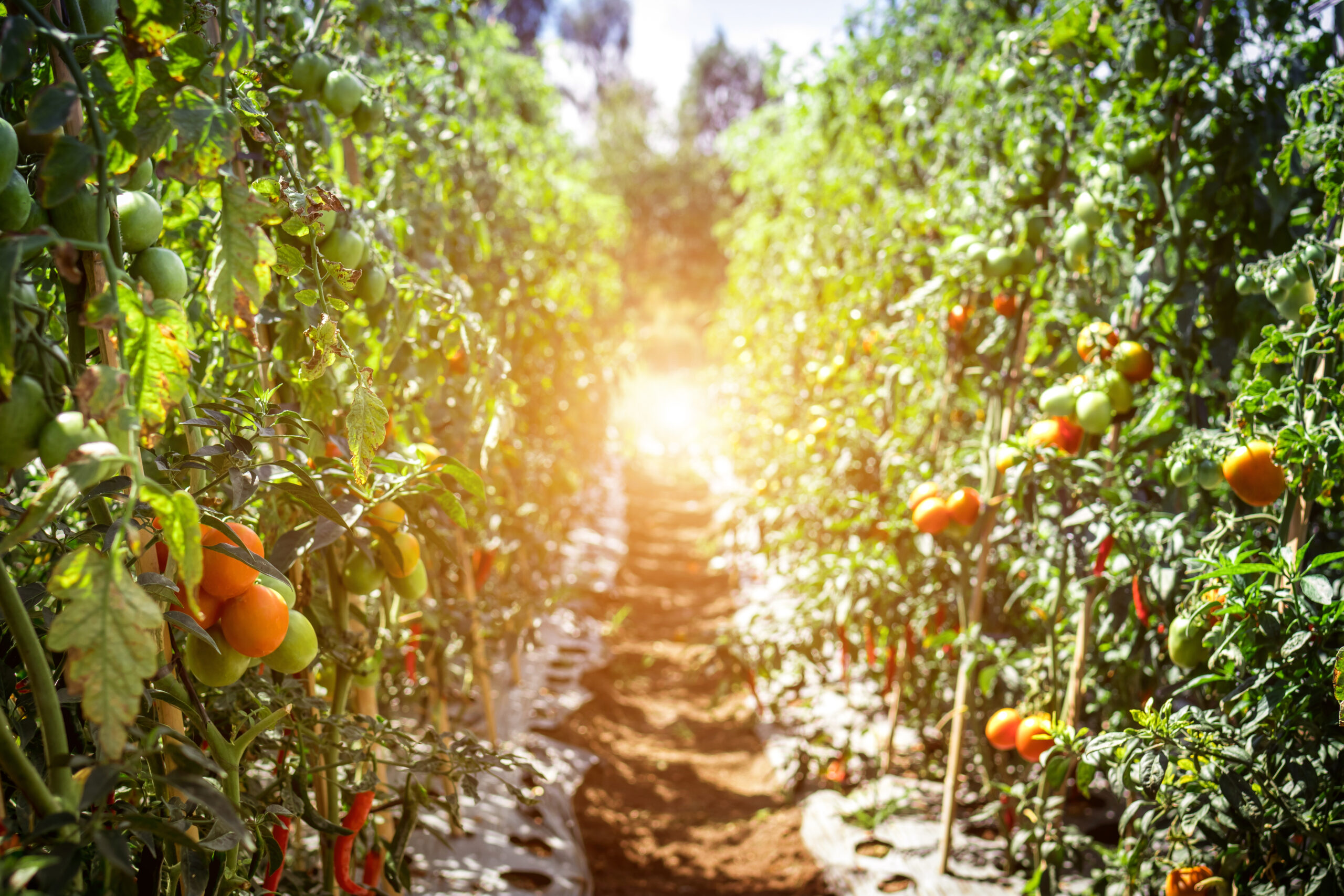
Tomato Supports
In no time at all, that tiny tomato seedling can grow into a gigantic, sprawling vine. Get or build some sturdy tomato cages and place them around the young plants.
Inexpensive wire tomato cages may do for patio varieties, but they’re far too flimsy for the longer indeterminate vines. Wire cages can be made by stapling a cylinder of sturdy hardware cloth to a tall wooden stake.
Or buy some 1-inch pine or cedar lumber and build your own cages.
Once your plants are well established and scrambling their way up your tomato cages, you’re on your way to having fresh, juicy tomatoes all summer.
Pin Growing Tasty Tomatoes to Pinterest


